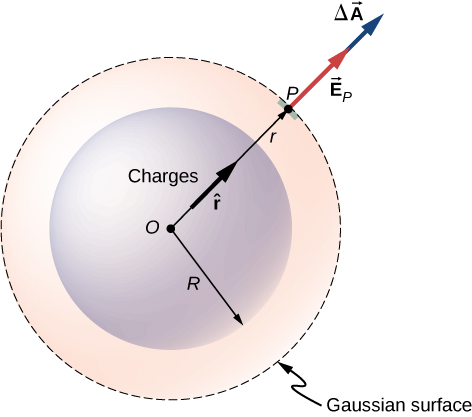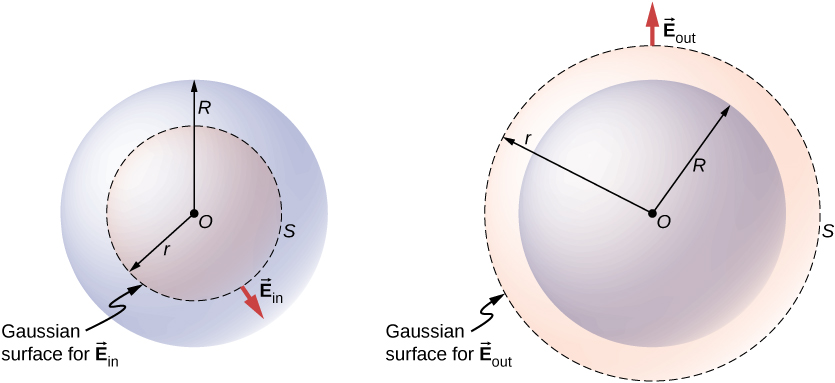| << Chapter < Page | Chapter >> Page > |

The magnitude of the electric field must be the same everywhere on a spherical Gaussian surface concentric with the distribution. For a spherical surface of radius r ,
According to Gauss’s law, the flux through a closed surface is equal to the total charge enclosed within the closed surface divided by the permittivity of vacuum . Let be the total charge enclosed inside the distance r from the origin, which is the space inside the Gaussian spherical surface of radius r . This gives the following relation for Gauss’s law:
Hence, the electric field at point P that is a distance r from the center of a spherically symmetrical charge distribution has the following magnitude and direction:
Direction: radial from O to P or from P to O .
The direction of the field at point P depends on whether the charge in the sphere is positive or negative. For a net positive charge enclosed within the Gaussian surface, the direction is from O to P , and for a net negative charge, the direction is from P to O . This is all we need for a point charge, and you will notice that the result above is identical to that for a point charge. However, Gauss’s law becomes truly useful in cases where the charge occupies a finite volume.
The more interesting case is when a spherical charge distribution occupies a volume, and asking what the electric field inside the charge distribution is thus becomes relevant. In this case, the charge enclosed depends on the distance r of the field point relative to the radius of the charge distribution R , such as that shown in [link] .

If point P is located outside the charge distribution—that is, if —then the Gaussian surface containing P encloses all charges in the sphere. In this case, equals the total charge in the sphere. On the other hand, if point P is within the spherical charge distribution, that is, if then the Gaussian surface encloses a smaller sphere than the sphere of charge distribution. In this case, is less than the total charge present in the sphere. Referring to [link] , we can write as
The field at a point outside the charge distribution is also called , and the field at a point inside the charge distribution is called Focusing on the two types of field points, either inside or outside the charge distribution, we can now write the magnitude of the electric field as

Notification Switch
Would you like to follow the 'University physics volume 2' conversation and receive update notifications?